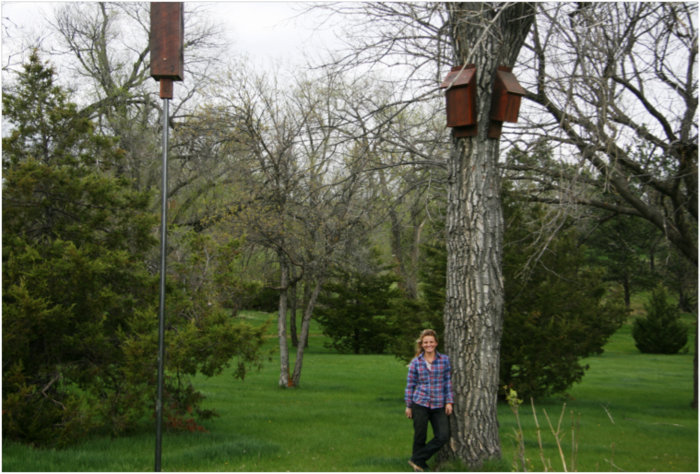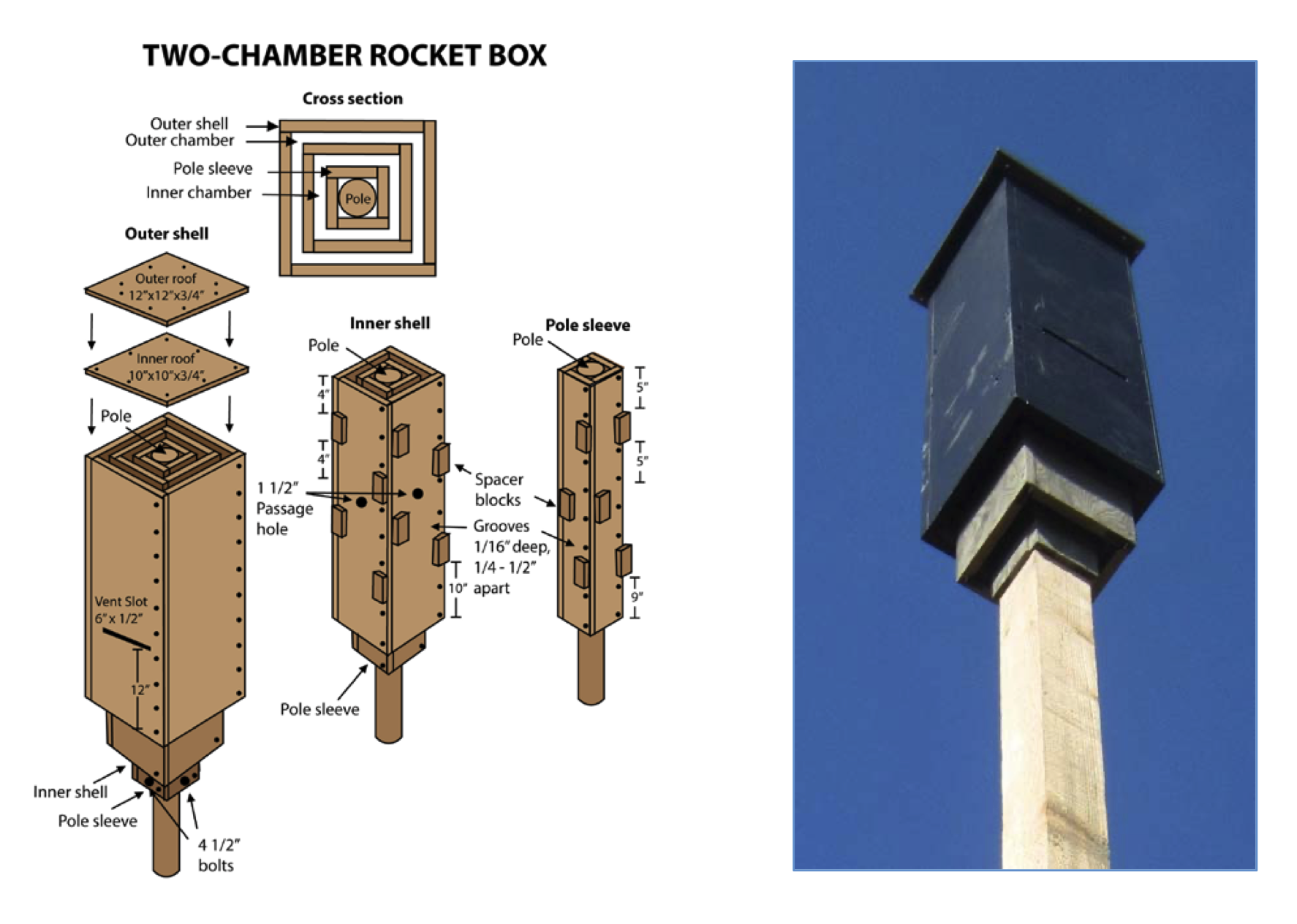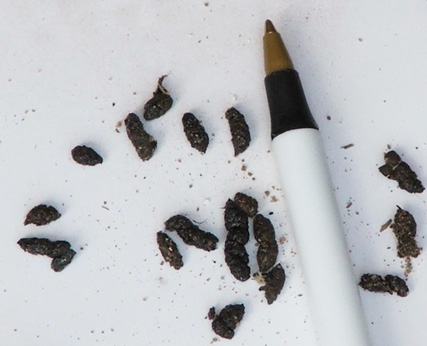Last update 14 February 2025
Should I put up a bat house? Unfortunately, information about bats and bat houses is often provided by folks trying to
sell you a bat house (perhaps not the most objective source of information). Research continues to refine house designs and
provide better guidance for their placement. Bat houses are most successful when properly constructed and properly located.
Bat House research in SD - Bat biologist Joel Tigner and graduate student Sarah Lewis collaborated with South Dakota GF&P
to assess the environmental and physiographic factors that may influence the occupancy of bat houses in SD. Three different
bat house designs were each tested at 26 sites across South Dakota: Eurobox, BCI-maternity box, and the Rocketbox.
Whereas research has shown bat houses can take several years to become inhabited, 21 of the 30 houses put up West River
were occupied in the first summer following installation. Three locations showed evidence of having maternity colonies in
one or more boxes. Of the remaining 48 houses located in East River and along the Missouri River houses, 9 Rocketboxes
were occupied in the first season. In this photo, Sarah Lewis is standing beneath their installation of 3 different box designs
at Shadehill RA (Abstract of their results). Photo: Joel Tigner.
Once you have excluded unwanted bats from your property, why not build a Bat-House so as to provide a replacement roost
for your newly evicted bats! The pragmatic selection of a workable design and placement of these artificial roosts should be
done well before the exclusion is performed. We offer the following suggestions that should be applicable to most of South Dakota.
Construction materials: Exterior walls (including backplate) and roofs should be constructed from the thickest material possible
to help keep interior temperatures stable and to prevent loss of warmth during evening/overnight hours. Ventilation holes/openings
are optional in our region and need not be included. Do not use pressure-treated or chemically-treated wood in constructing your
bat house as these can be toxic to bats. Weathered 1"-thick roughcut boards are a good choice.
Surface treatment: All exterior surfaces should be stained or painted dark colors so as to absorb radiant heat from the sun.
Interior surfaces should not be treated with any paints, stains, or varnishes. Avoid boards that are likely to ooze sap/tar/resin
when exposed to the sun.
Whistles + bells: Do not use metal screen on the interior surfaces of the house - though it may seem like a good idea, screening
material has sharp edges that can damage delicate wing-membranes, toes, feet, and thumbs. Plastic screen is a better choice,
but why not simply 'rough up' the interior surfaces slightly so as to give the bats toe-holds. Increasing the size of the 'landing pad'
beneath the bat-house will increase the chances that your box will be used by bats.
Mounting your bat-house: Your bat-house should be mounted on a vertical surface at least 10-12 feet off of the groundr. This height
will protect your bats from most squirrels, cats, birds, and children with sharp sticks. If you mount your bat-house on a pole, you will
want to ring the pole with metal flashing to prevent cats and squirrels from climbing up into your bat-house. If you mount your bat-house
on a tree, insure that there is open space below the box so that bats can come and go freely without having to fly around branches and
foliage. Regardless of the location, be sure to mount the bat-house where it will receive as much sunlight as possible.
Location,location, location: If possible, choose a site close to water (stream, river, pond). Water leads to a greater diversity of vegetation
which generally results in more insect prey and that is what your bats will be looking for! Young bats need a lot of open space when they are
learning to fly - a nice open backyard is far better than a grove of trees, or among densely packed buildings. Again, be sure to mount the
bat-house where it will receive as much sunlight as possible.
Be patient: If you don't see bats in your house immediately, don't give up! Leave the house in place! Bat's are picky and quite suspicious
of new things - it may take months (sometimes years) before bats adopt your bat-house as their home. Even if your neighborhood bats
do not use your new bat-house as apermanent roost, it may well serve as night roost for short periods of rest between hunting trips.
How will you know that you have new tenants? If you don't see bats flying about your bat-house just after dusk, you might want to look
around on the ground directly beneath the house for other types of evidence (guano). Bat poop is composed mostly of chewed up insect
wings, legs, and bodies - if you drag your foot over the pellets and then look at them in bright sunlight, the material should glitter as the light
shines off of all the bug parts!



